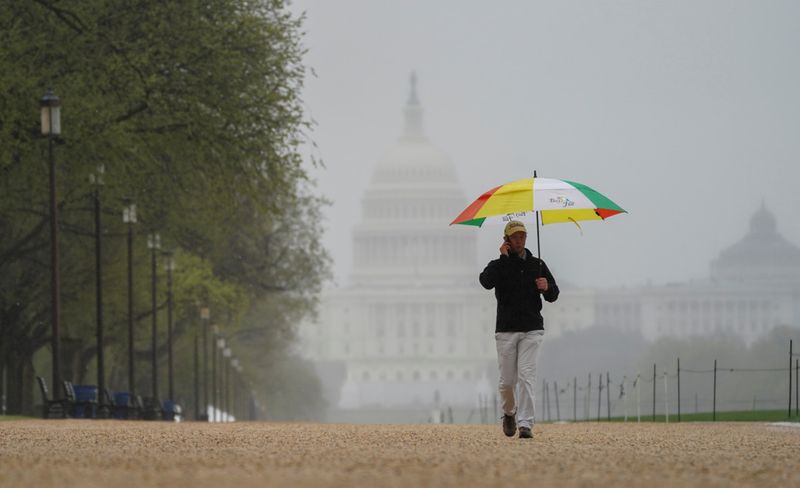
Dear President Trump,
I have not been one of your supporters, but when it comes to combating the coronavirus, saving lives, I am praying for your success, because so much is riding on the decisions that you, and only you, can make. So what I am about to say is truly in the spirit of being constructive: You need a plan.
And here is what is also obvious: There is a high degree of agreement among leading public health experts on the contours of what could become a three-step “Trump plan.”
By embracing their strategic approach as your own and sticking by it — not going off on tangents every day in your White House briefings — you would deliver what the public craves most in the short run: the confidence that we actually have a plan to fight this virus, save everyone we can and rapidly reopen the economy based on science and data.
Right now we keep reading that more young people in their 20s are dying from it than expected. But if we don’t have a picture of the total number of people infected, that anecdotal evidence could be dangerously misleading
Let me explain.
What is eating away most at all the people sheltering at home today are these questions: Am I safe? Are my kids safe? Will I get paid again? Will my savings last, if I have any? When will my children get back to school? When am I realistically going to be able to get back to work? Will my workplace be shut forever?
That the stock market bounces back because of a trillion-dollar bailout does not relieve their anxiety.
Only an end to this crisis and a vaccine will totally relieve their anxiety. But what would give everyone a boost, from Main Street to Wall Street to the management suite — and buy the patience we need — is if they saw that you had a clearly defined, multiphase plan for combating the coronavirus

That is, a plan that starts with sheltering in place today and pivots to gradual openings and back-to-work opportunities as soon as the data tells us that is safe — with your experts giving regular updates on where the country is in achieving benchmarks laid out by this plan.
People want to know that you have a plan and are acting off it. Right now they think you have hunches and moods.
We must do better. To be sure, we need an immediate all-out push by states and the federal government to get hospitals the equipment they need to deal with a surge of coronavirus patients, an effort that is at long last underway. But beyond that, you need to articulate the three-step plan that is out there and is yours for the taking.
Step by step
Step 1: First, you need to call for a 50-state sheltering-in-place/social-distancing program. While the experts differ on how long that national lockdown should be — two weeks, four weeks, eight weeks, whatever the CDC recommends, I say — they virtually all agree that it is needed to manifestly slow the spread of the coronavirus, to prevent our hospitals from being overwhelmed and to buy us the critical time we need to collect the data required to inform all future decision-making.
I realise, Mr. President, that some of your Republican “red state” governors and rural mayors are telling you not to ask them to shelter in place, because their less densely populated states have not been that affected. But they are doing you and their citizens no favours.
As my Minnesota friend Michael Osterholm, director of the Center for Infectious Disease Research and Policy at the University of Minnesota, pointed out to me, this virus hits large metro areas first, because of their density and global connections — and many of those are in “blue states.”
“But this virus will find everyone,” he told me. “It may start in the cities, but I can tell you that it is going to hit central Minnesota. Don’t be on the wrong side of this. This is all of us against the virus, not red states versus blue states. And if we all don’t act now, one day it will just be one big fire” of infection.
Step 2: We use this period of lockdown to gather as much data as possible about who has the coronavirus, where they live, what their ages and degrees of illness are, what the mortality rate is at what ages, and what other ailments or immune deficiencies they may have.
Right now we keep reading that more young people in their 20s are dying from it than expected. But if we don’t have a picture of the total number of people infected, that anecdotal evidence could be dangerously misleading. One city or hospital system may tell you that out of 500 cases of people under age 25 treated, 50 people died. But suppose the number of infections in that region for people under 25 is discovered through testing and data collection to be 25,000 — the picture looks totally different.
Step 3: This data can then be the foundation of what Katz calls “the pivot.” Once we have slowed the transmission of the coronavirus nationally — and developed a stratified national risk map — we can then, on the basis of that data, said Katz, begin phasing people back into the workplace to get the economy humming again.
By letting the epidemiological data drive that pivot, Mr. President, you will reassure people that your pronouncements are based on science and the strategic logic of a plan, and you will be able to bring the whole country, not just your base, along with you.
Your presidency and our immediate future are inextricably intertwined. You need to rise above what sustained you during your first three years — dividing, misleading and impugning experts and the deep state — and give the country what it so desperately needs and craves now: a science-based plan.
— Thomas L. Friedman is a Pulitzer prize-winning journalist and author







